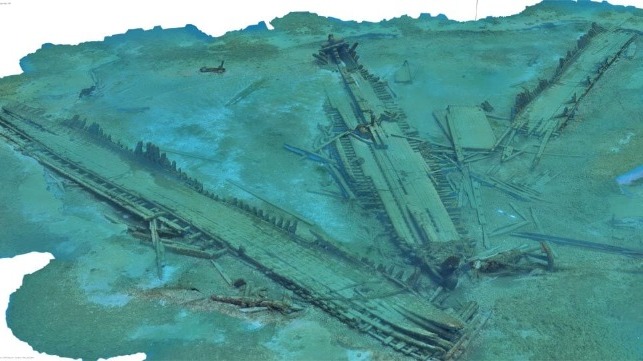130-Year-Old Wreck Discovered in Lake Michigan

The Great Lakes' rich shipping history dates back two centuries, and the region's rough weather and busy traffic lanes have resulted in the loss of about 8,000 vessels over the years. The cold freshwater preserves otherwise fragile materials, making the region a treasure trove for explorers. Every year, new wrecks from the Age of Sail and the early days of steam power are discovered in the deep - like the schooner Margaret A. Muir, which was found by a team of volunteers two months ago.
The Margaret A. Muir was a three-masted cargo schooner built in 1872. On September 30, 1893, she was under way in the Straits of Mackinac with a load of salt, bound for Chicago. As she exited the straits and transited south down Lake Michigan, she encountered severe conditions, including winds of about 40 knots. High waves swamped the vessel's cargo holds as the crew attempted to make for a port of refuge. The captain and six crewmembers abandoned ship into a lifeboat and managed to reach shore in Wisconsin; sadly, the ship's dog did not escape.
The Muir's location was lost to history for 130 years - until a small team of volunteers for the Wisconsin Underwater Archaeology Association mounted a search to find her. They used contemporary accounts of the sinking to chart out the likeliest areas for the wreck and scanned the bottom, starting just off the harbor at Algoma, Wisconsin. They found it in less than a day, nestled in a depression on the bottom. Its hull was shattered, but its construction and deck equipment were unique enough to identify the vessel.

Courtesy WUAA

that matters most
Get the latest maritime news delivered to your inbox daily.
The Muir rests in 50 feet of water, within easy reach for conventional diving. The Wisconsin Underwater Archaeology Association returned to conduct a dive survey and create a 3D photogrammetry model of the site, which will allow the public to virtually "visit" the wreckage.
The team hopes to use the evidence to get the wreck onto the National Register of Historic Places - just as they did with last year's find, the Trinidad, which they also discovered just off Algoma in June 2023.
